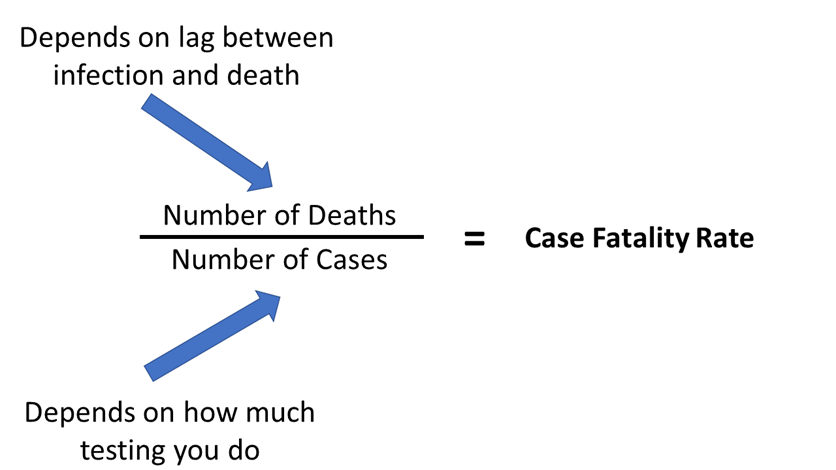A public health nurse is participating in a research study to determine how virulent a new virus is. Which of the following mortality measures should the nurse use to calculate this data?
Cause-specific mortality rate
Age-specific mortality rate*
Proportionate mortality
Case fatality
The Correct Answer is D
Choice A Reason:
The cause-specific mortality rate measures the number of deaths attributed to a specific cause within a population during a given time period. While this measure is useful for understanding the impact of a particular disease on a population, it does not directly indicate the virulence of a virus. Virulence refers to the severity or harmfulness of a disease, which is better captured by the case fatality rate.
Choice B Reason:
The age-specific mortality rate calculates the number of deaths within specific age groups in a population. This measure helps identify age-related mortality trends but does not provide information about the virulence of a virus. Age-specific mortality rates are more useful for understanding the impact of diseases across different age demographics rather than assessing the severity of a new virus.
Choice C Reason:
Proportionate mortality refers to the proportion of deaths in a population attributable to a specific cause relative to all deaths. This measure helps in understanding the relative importance of different causes of death but does not directly measure the virulence of a virus. Proportionate mortality is more about the distribution of causes of death rather than the severity of a particular disease.
Choice D Reason:
Case fatality rate (CFR) is the most appropriate measure for determining the virulence of a new virus. CFR is calculated by dividing the number of deaths caused by the disease by the number of diagnosed cases of the disease, then multiplying by 100 to get a percentage. This measure directly indicates the lethality of the virus by showing the proportion of diagnosed cases that result in death. It is a critical indicator for assessing the severity and potential impact of a new infectious disease.

Nursing Test Bank
Naxlex Comprehensive Predictor Exams
Related Questions
Correct Answer is D
Explanation
Choice A: Implementing the Teach Back Method When Prescribing Medication
The Teach Back Method is an effective communication strategy where healthcare providers ask clients to repeat back the information given to ensure understanding. While this method can improve medication adherence and health literacy, it does not directly address the broader systemic issues related to poverty. It is a useful tool but not the most impactful intervention for breaking the cycle of poverty.
Choice B: Replacing Medicare Programs with Medigap Policies
Medigap policies are supplemental insurance plans that cover costs not included in traditional Medicare. However, replacing Medicare programs with Medigap policies would not necessarily improve outcomes for clients impacted by poverty. Medigap policies can be expensive and may not be affordable for low-income individuals. This intervention does not address the root causes of poverty or improve access to essential health services.
Choice C: Eliminating the Use of Client Portals or Virtual Visits
Eliminating client portals or virtual visits would likely have a negative impact on client outcomes, especially for those in poverty who may have limited access to transportation. Virtual visits and client portals provide convenient access to healthcare services, allowing clients to communicate with providers, access medical records, and receive care without the need for in-person visits. Removing these options would reduce access to care for many individuals.
Choice D: Opening a Community Health Center in an Underserved Area
This is the correct choice. Opening a community health center in an underserved area directly addresses the lack of access to healthcare services, which is a significant barrier for individuals living in poverty. Community health centers provide comprehensive primary care, preventive services, and support for managing chronic conditions. They often offer sliding scale fees based on income, making healthcare more affordable and accessible for low-income populations. By improving access to healthcare, community health centers can help break the cycle of poverty and improve overall health outcomes.
Correct Answer is D
Explanation
Choice A Reason:
Asking if the client has an immunization card for documentation is important for record-keeping and ensuring that the client's vaccination history is up-to-date. However, this question does not directly address the safety of administering the vaccine. The primary concern for safety is identifying any potential allergies or adverse reactions.
Choice B Reason:
Inquiring if there are any questions regarding the client's vaccine schedule is helpful for clarifying any doubts and ensuring the client understands their vaccination plan. While this is important for overall vaccine management, it does not specifically address immediate safety concerns related to administering the vaccine.
Choice C Reason:
Asking if the client has a site preference for vaccine administration can enhance the client's comfort and experience. However, this question is more about personal preference and does not impact the safety of the vaccine administration process.
Choice D Reason:
If they have had any past issues or allergies to the vaccine. This is the most critical question for ensuring safety. Identifying any previous adverse reactions or allergies to vaccines is essential to prevent potential allergic reactions or other complications. This information allows the nurse to take necessary precautions or choose an alternative vaccine if needed, ensuring the client's safety during immunization.
Whether you are a student looking to ace your exams or a practicing nurse seeking to enhance your expertise , our nursing education contents will empower you with the confidence and competence to make a difference in the lives of patients and become a respected leader in the healthcare field.
Visit Naxlex, invest in your future and unlock endless possibilities with our unparalleled nursing education contents today
Report Wrong Answer on the Current Question
Do you disagree with the answer? If yes, what is your expected answer? Explain.
Kindly be descriptive with the issue you are facing.
